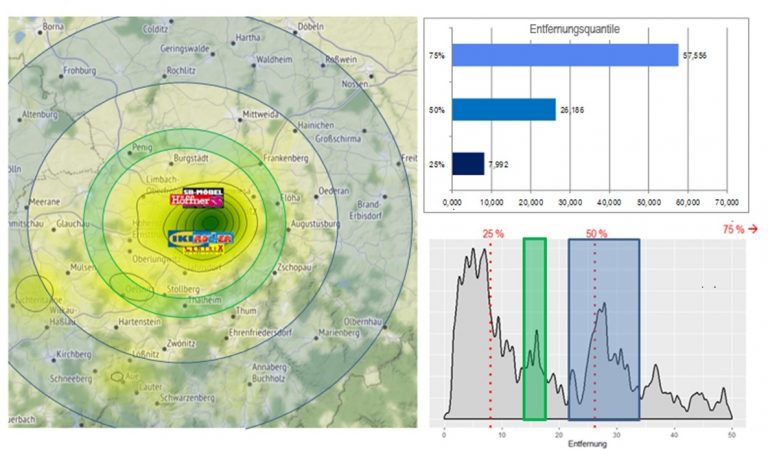Measure campaigns and advertising success with geofencing
“What is our return on marketing investment?”
“Do digital or analog forms of advertising provide the higher revenue boost?”
All marketers know these important questions. But answers are hard to come by: many factors interact and there is usually a lack of data for a reliable analysis. This applies, for example, to the classic in the retail trade: the brochure. But there is a way to get to the bottom of the success factors. We took a look at digital and printed brochures in comparison. The result is already surprising, but even more exciting is the method.
How did we proceed?

Geodata makes customer paths visible
Digital marketing usually also generates data for campaign evaluation at the same time. This is different for offline measures. The brochure of, say, a nationwide retail chain in the mailbox does not send a response as soon as it is read. Nevertheless, it is possible to determine the advertising impact of the brochure – using Schober Geofencing.
This method uses smartphones as a database, on which users allow certain apps to access their location. The Device then sends motion points with timestamps to the App Publisher. Schober buys this data (the database currently contains over 52 million unique mobile IDs) and matches it against the Schober data universe in accordance with data protection regulations. Now, based on these IDs, we can narrow down to the desired locations and times using geographically accurate polygons.
Revolutionary use cases of Schober Geofencing

Catchment area
In this way, the initially “data-less” offline measures can be provided with data for measuring the efficiency of these measures. What you couldn’t see before now becomes transparent. This results in revolutionary use cases:
- Analysis of visitor profiles using third-party data plus a comprehensive analysis of catchment areas
- Formation of realistic personas as a basis for qualified and individual target customer approach
- Optimized targeting of store visitors (including competitors’ store visitors)
- High-five analyses of the competition in time and space
- And, of course, measuring campaigns and advertising success in terms of actual store visitors. After all, anyone who reads the printed brochure and feels addressed will also come to the store to make a purchase.
Classic brochure or not?

Store visitors
So much for the method, but what has the greater advertising impact? The analysis based on the matched data shows that there is no universal answer, because the result depends on socio-demographic structure, competitive environment, store locations and other aspects. From several projects, however, which we have carried out nationwide for different retailers and specialty chains
have performed, one can derive the following rules:
- Digital brochures are effective and ensure a higher frequency of visits to the stores.
- Printed brochures also have a good advertising impact, which is reflected in higher numbers of visitors to the stores.
- Digital and printed brochures activate very different groups of buyers – as shown by various profile analyses at zip code level.
- Digital brochures appeal to a younger and more open-minded target group, while printed brochures attract customers with significantly more purchasing power.
- Measures that incorporate real-life shopping routes for store visitors work particularly well. In other words, anyone who visits a gym is also interested in sports equipment suppliers on their way to the gym.
- The best advertising impact is achieved by cross-media campaigns that use radio or TV in addition to brochures.
The surprise? The brochure is and remains a strongly activating element in advertising. Digital advertising formats can complement very well, but they are unlikely to replace the brochure in the foreseeable future. What’s more, anyone looking for purchasing power is printing.

Offline and online advertising measurement
Measuring campaign and advertising success has been a particular challenge for offline campaigns. But with Schober Geofencing and the right analysis steps, advertising measures in their entirety – online and offline – can be precisely recorded, evaluated and optimized for maximum sales boost.
What are your experiences? Have you faced similar challenges? Do you use geospatial data in your marketing?
Our geomarketing specialist Sven Waldenmaier is looking forward to learning more and entering into a dialog with you. Feel free to contact him directly HERE.
